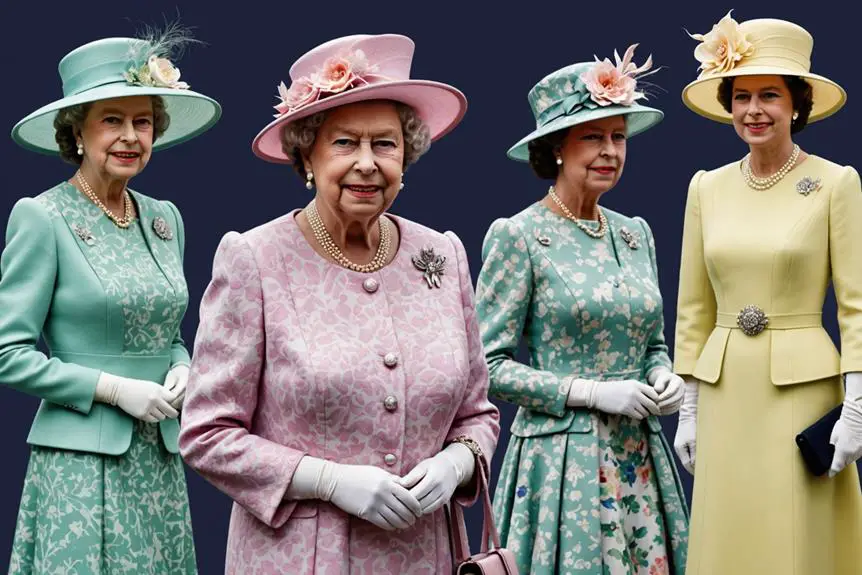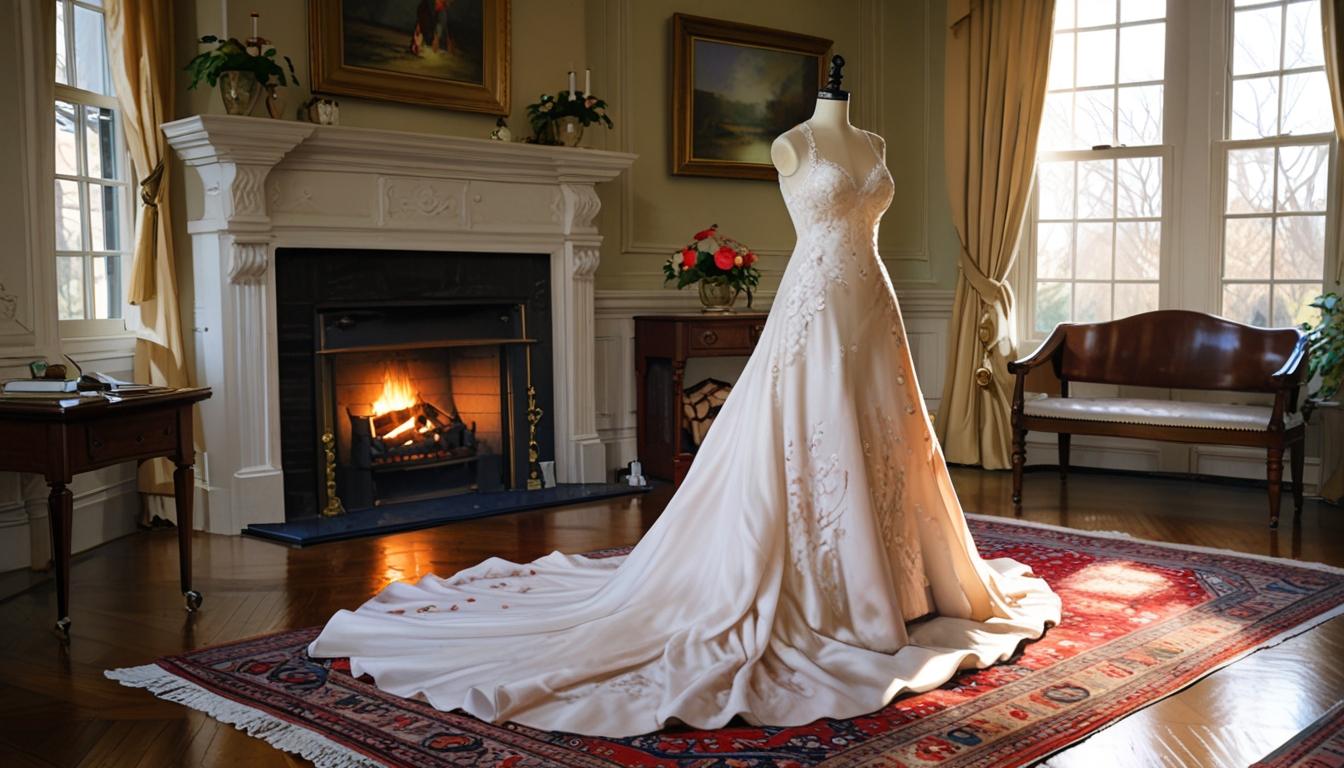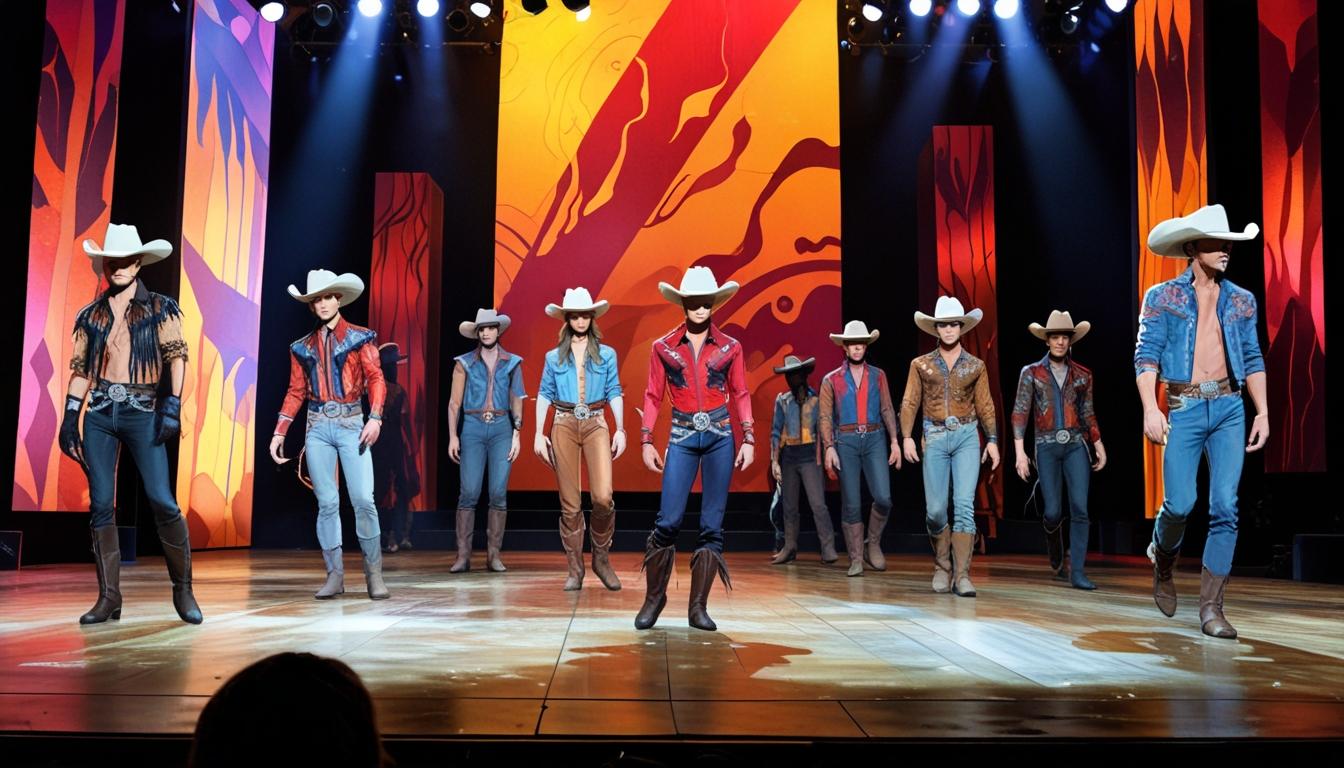When you think about Queen Elizabeth II's fashion, it's hard to ignore how her choices transcended mere clothing and became a language of their own. From her iconic wedding gown to the striking hats that defined her public persona, each piece tells a story. You might even find it intriguing how her vibrant wardrobe reflected not just personal flair but also a sense of duty and national identity. As you explore these moments, you'll uncover layers of meaning that go beyond fabric and form, revealing the intricacies of a style that shaped a monarchy.
Early Fashion Influences
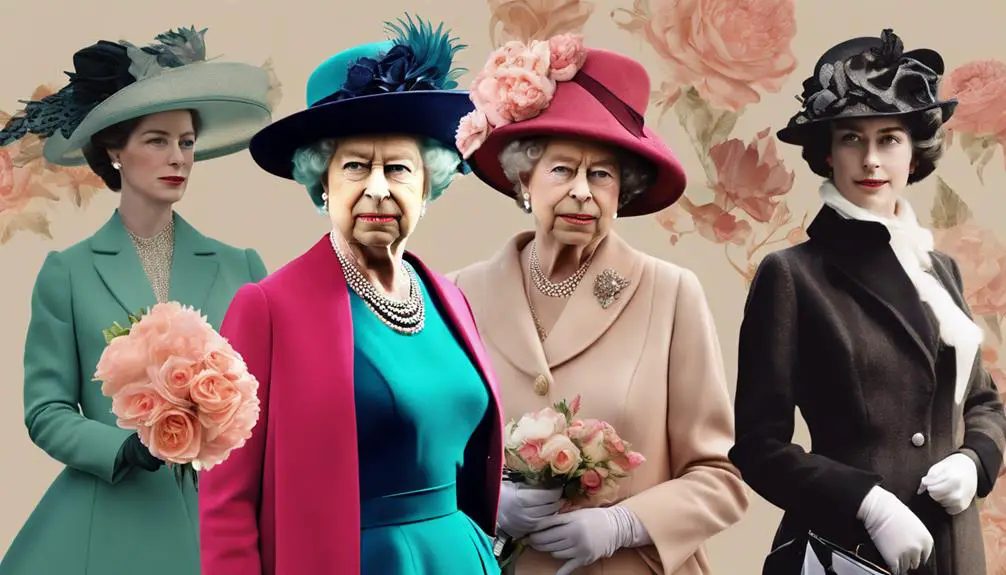
Queen Elizabeth II's early fashion influences reveal a fascinating blend of practicality and elegance that shaped her iconic style. In her early years, Elizabeth embraced floral pinafores and tailored outfits, which reflected the post-WWII rationing that defined the era. These choices showcased her ability to marry style with necessity, laying the groundwork for her lifelong commitment to British design.
As she evolved from childhood to formal wear, royal traditions and family expectations guided her changing wardrobe, emphasizing a polished appearance. One standout moment was her tailored dress coat worn to the coronation concert of King George VI in 1937, highlighting her early engagement with public life and the responsibilities that came with being a member of the royal family.
In 1936, her matching outfits with her sister, Princess Margaret, featuring plaid kilts and knitted sweaters, perfectly illustrated the royal family's penchant for coordinated looks. These fashion influences not only reflected the values of her upbringing but also set the stage for Queen Elizabeth II's future as a style icon, demonstrating that even early in life, she understood the importance of elegance and meticulous presentation.
Iconic Wedding Gown
The wedding gown of Queen Elizabeth II stands as a remarkable symbol of her unique style and the era's fashion sensibilities. Designed by the illustrious Norman Hartnell, this gown was crafted from luxurious silk duchesse satin, showcasing the elegance that defined royal weddings.
Its intricate embroidery featured national symbols like roses, thistles, and shamrocks, beautifully representing the unity of the United Kingdom. Adorned with thousands of pearls and crystals, the gown exemplified the opulence of post-war fashion, capturing the nation's resilience and creativity during a time of austerity.
Notably, the gown's funding came from rationing coupons, making it a poignant reminder of the era's challenges. This wedding dress didn't just mark a significant occasion; it set a standard for bridal styles for generations to come, influencing countless designs in the years that followed.
As you admire Queen Elizabeth II's wedding gown, remember that it embodies both the grace of a royal wedding and the spirit of a nation rebuilding itself. Its legacy endures, inspiring brides around the world to embrace elegance and tradition in their special moments.
Signature Millinery Styles
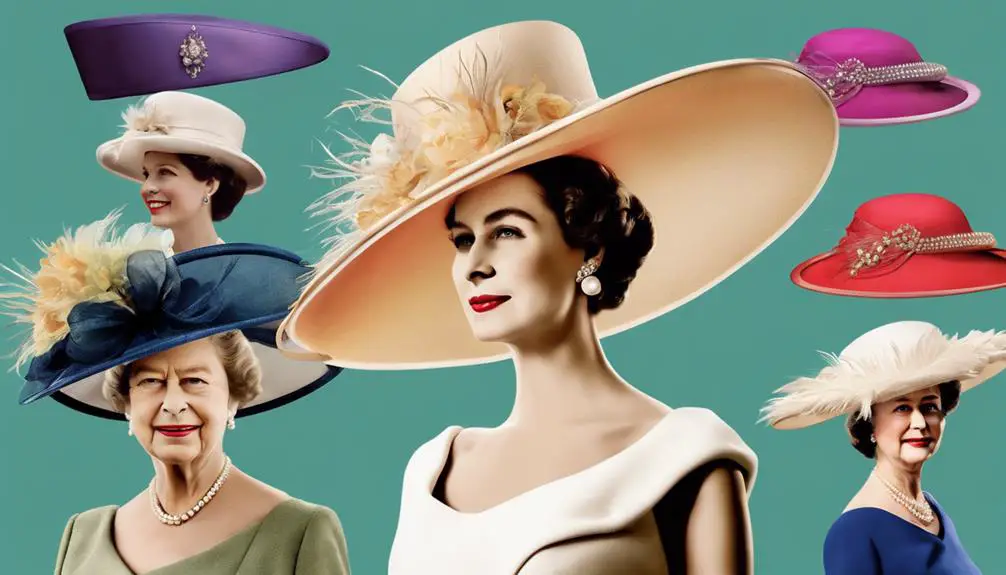
While attending royal events, hats became an essential part of her wardrobe, showcasing a unique blend of style and personality. Queen Elizabeth II's millinery choices, often crafted by the talented Rachel Trevor-Morgan, were more than mere accessories; they were vibrant statements that complemented her outfits beautifully.
You'd notice her preference for wide-brimmed hats, which not only enhanced her visibility among crowds but also added an air of majesty to her royal presence. The iconic styles she adopted frequently featured floral adornments, feathers, and bold patterns, reflecting her personal taste while celebrating the cultural significance of each occasion.
Each hat served a purpose, harmoniously aligning with the color schemes of her dresses, reinforcing her commitment to coordinated fashion. This attention to detail transformed her hats into a hallmark of elegance and sophistication.
As you explore Queen Elizabeth II's fashion legacy, you'll find that her hats became symbols of her identity, often sparking public interest and media coverage. They resonate with the essence of her reign, perfectly blending tradition and modernity, leaving a lasting impact on royal fashion.
The Rainbow Wardrobe
Bright colors defined a significant part of Queen Elizabeth II's fashion legacy, often referred to as her "Rainbow Wardrobe." This vibrant collection was more than just a series of outfits; it aimed to spread joy and positivity during her public engagements. Each vibrant outfit was deliberately chosen, ensuring she stood out and was easily visible in large crowds. The playful colors, featuring bold patterns and striking hues, reinforced her iconic fashion statement, fostering a deeper connection with the public.
Angela Kelly, the Queen's longtime dresser, played an essential role in crafting this rainbow wardrobe, emphasizing the importance of visibility through her designs. Matching hats complemented the ensembles, creating a cohesive look that became synonymous with the Queen's public appearances.
One standout moment was the neon green outfit worn during the Trooping the Colour parade in 2016, celebrating her 90th birthday. This striking choice not only showcased her vibrant style but also became a viral sensation, illustrating the impact of her colorful wardrobe.
In essence, Queen Elizabeth II's rainbow wardrobe serves as a reflection of her ability to blend tradition with modernity, using fashion to evoke joy and positivity in every public moment.
Cultural Significance of Outfits

Throughout her reign, Queen Elizabeth II's outfits carried deep cultural significance, often reflecting the national pride and sentiments of the countries she visited. Her fashion choices weren't just about style; they were strategic expressions of soft diplomacy.
For instance, when she wore a jade-green coat during her visit to Ireland in 2011, it was a powerful tribute to the nation, symbolizing improved British-Irish relations. Similarly, her diamond and platinum wattle brooch during engagements in Australia highlighted the enduring ties between the royal family and the country.
The Queen often incorporated national colors and symbols in her outfits, such as her EU hat at the 2017 State Opening of Parliament, which sparked public speculation during the Brexit discussions.
Her vibrant colors and bold patterns later in her wardrobe aimed to inspire joy and positivity, reinforcing her connection with the public and their national identity. Each outfit served not only to represent the British monarch but also to resonate with the cultural narratives of host nations, transforming her wardrobe into a canvas of history, diplomacy, and shared pride.
Frequently Asked Questions
What Notable Things Did Queen Elizabeth II Do?
Imagine a life steeped in royal duties, where public appearances and historical speeches shape a nation's narrative. You'd see her charity work flourish, engage in diplomatic engagements, and forge a lasting family legacy through cultural impact and travel experiences.
Was Queen Elizabeth a Fashion Icon?
Yes, you can see Queen Elizabeth as a fashion icon. Her royal wardrobe showcased color symbolism, unique hat styles, and thoughtful jewelry choices, reflecting her personal style and cultural impact throughout her fashion evolution and public appearances.
How Did Queen Influence Fashion?
You can't underestimate how her royal wardrobe mesmerized the world! Her color symbolism, unique hat styles, and designer collaborations revolutionized fashion evolution, shaping public perception and cultural impact while promoting sustainable fashion through iconic dresses and significant accessories.
What Is an Interesting Fact About Queen Elizabeth Fashion?
Did you know Queen Elizabeth often used royal colors and distinctive hat styles? Her glamorous gowns featured fabric choices reflecting historical influences, while personal designers created tailored suits and accessories that held cultural significance and brooch symbolism.
